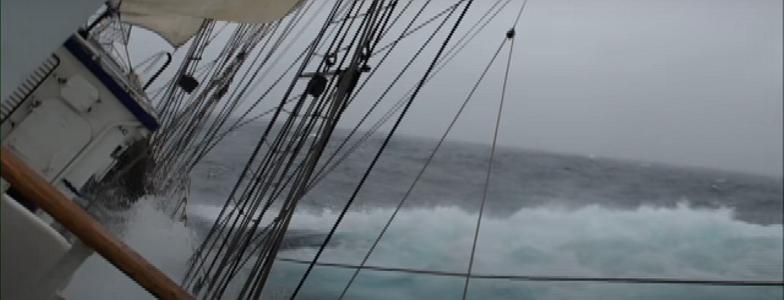 On February 17, 2010, thirteen years ago today, the SV Concordia, a school ship operated by West Island College International, was knocked down and sank off the coast of Brazil. Fortunately, all 64 passengers and crew aboard were rescued. The Transportation Safety Board of Canada in its Marine Investigation Report concluded that poor training played a role in the knockdown and capsize of SV Concordia.
On February 17, 2010, thirteen years ago today, the SV Concordia, a school ship operated by West Island College International, was knocked down and sank off the coast of Brazil. Fortunately, all 64 passengers and crew aboard were rescued. The Transportation Safety Board of Canada in its Marine Investigation Report concluded that poor training played a role in the knockdown and capsize of SV Concordia.
How did the ship sink? Contrary to earlier accounts, the Transportation Safety Board found no evidence of a microburst, a sudden and violent downdraft of wind that can reach speed as high as 150 knots. There may have been downdrafts present in the squalls, but nevertheless, the winds in which the ship capsized were no stronger than winds the ship had previously encountered.
The short answer as to why the ship sank is twofold. First, the officer on watch did not perceive the threat to the ship from the approaching squalls and therefore was slow to react when conditions became critical. The second and arguably the primary cause for the sinking was simply that several watertight doors and other hatches had been left open on the leeward side of the ship. If these watertight openings had been secured, the additional buoyancy provided by the deck houses would have, in all probability, resulted in the ship surviving the knockdown. Instead, they acted as points of down-flooding which accelerated the capsize. The watertight doors and openings on the weather side of the ship were ordered closed on the approach of the squall lines but the leeward doors were left open, dooming the ship once it was knocked down.
The animation below by the Transportation Safety Board of Canada (TSB) illustrates the events leading up to the capsize.
